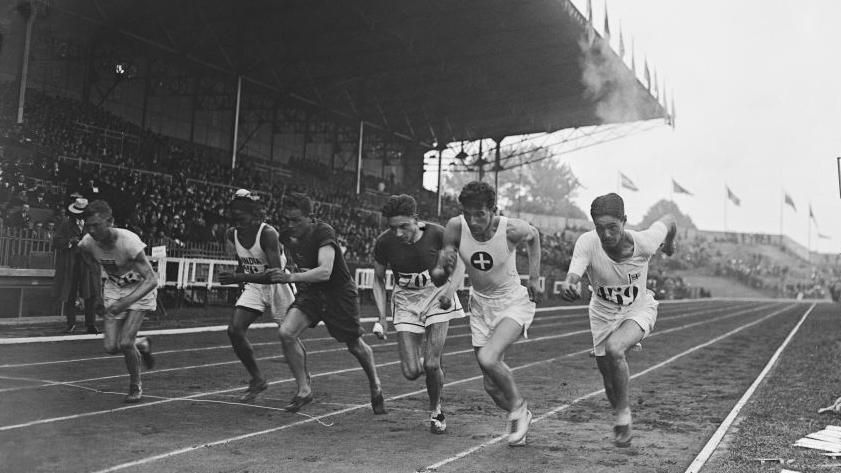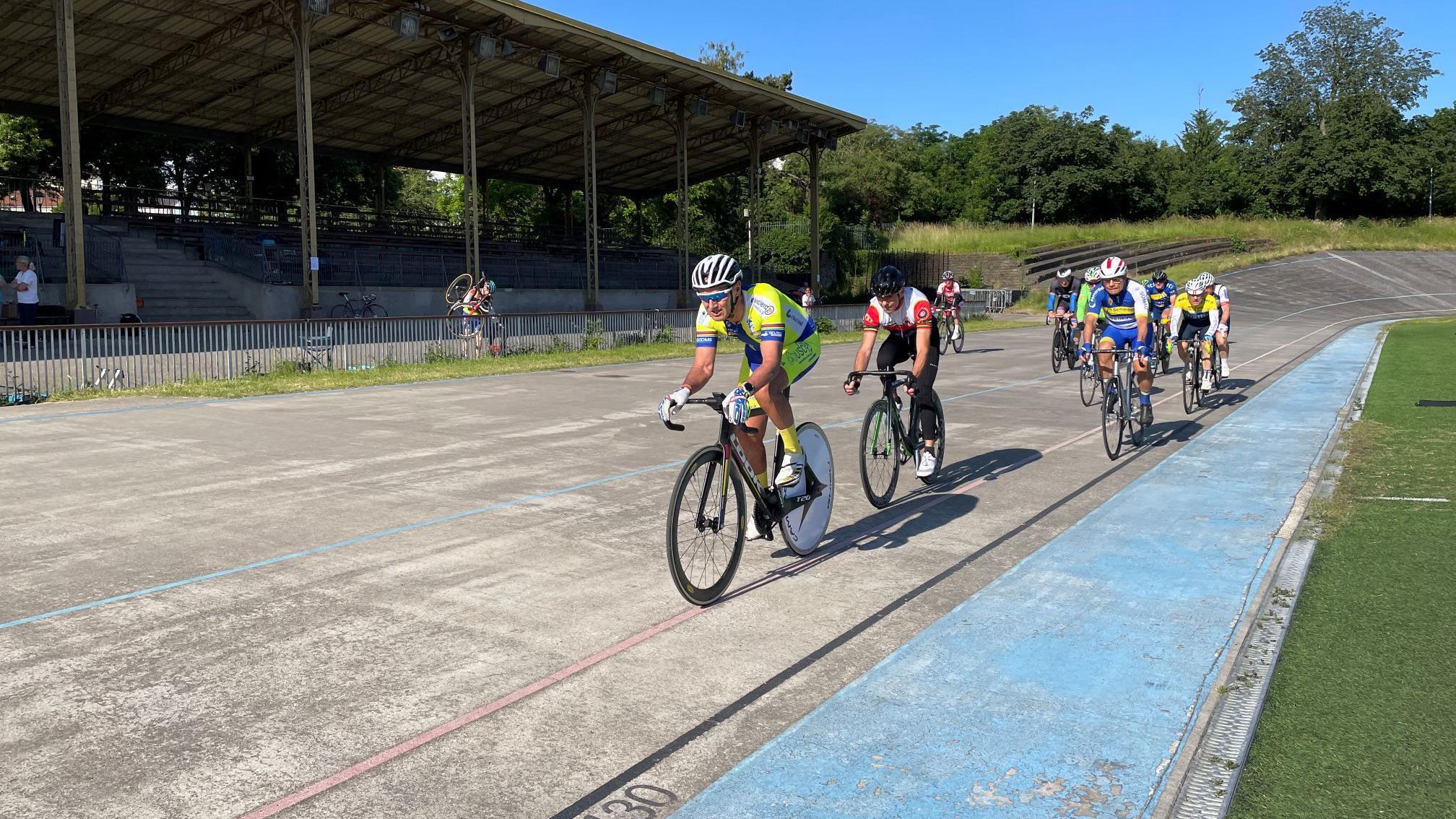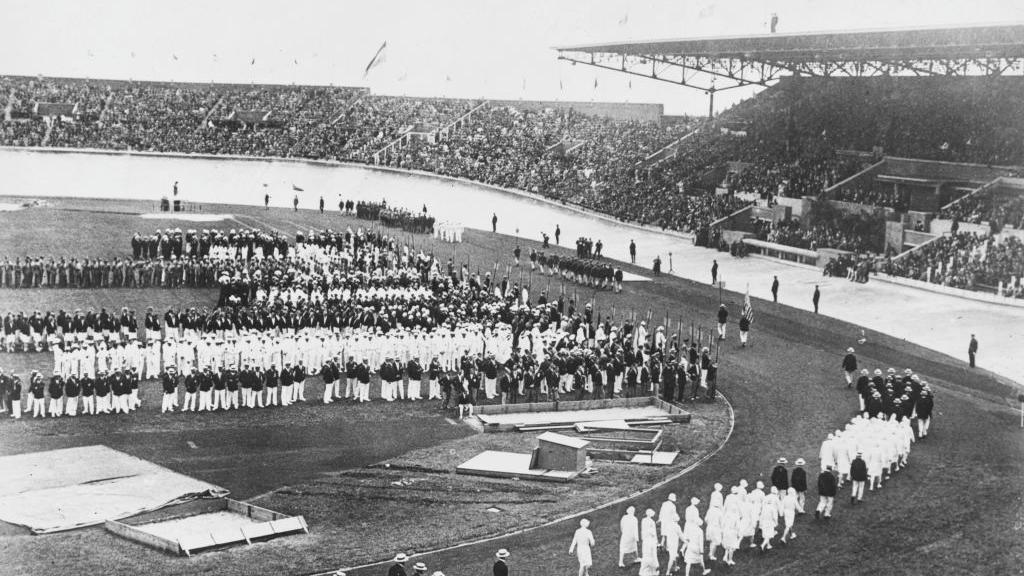
“If Greece na di cradle of di Olympics, Paris go represent di home.”
Na wetin begin di partisan account of di long association of di city wit di Games, ahead of how dem take fail di bid (to London) for 2012.
Paris, according to di author, na wia di Olympic movement “rediscover strengths afta history of too much sleep for long,” and na wia “so many important steps for di modern-day growth” bin take place.
Step one na di founding congress of di International Olympic Committee, wey dey chaired by di French aristocrat Pierre de Coubertin at Sorbonne university for June 1894.
And den steps two and three come: di second and eighth Olympic Games, both dey organised for di French capital.
Today, e still get traces of dose Games. Here and dia, if you look dia “legacy”, e still dey veri much alive.
Exhibit one na still di veri big vélodrome for di Bois de Vincennes wey dey known as di Cipale (short for Municipale), wey still dey in use 124 years afta di first Paris Games.
Cycling na one of di most popular sports back in 1900, but di Cipale also dey used for gymnastics, football, rugby… and cricket.
- How Paris dey prepare for di Olympics and Paralympics?
- Fernandez alleged racist chant – Fifa, Chelsea react
- ‘I pack comot for house becos I wan play football’ – Goalkeeper Chiamaka Nnadozie

Na on dis hallowed turf di (until now) only eva Olympic cricket match bin take place – between England and France.
England win am – but dat still mean say France na di title holder of di Olympic silver. Dat go presumably end for 2028 wen cricket return for Los Angeles – but who know if e go change?
E get renovations for La Cipale ova di years but apart from di roof, di viewing stand neva change.
Na di same tin wit di concrete track wit di raised curves at both end, and dia – di forgotten bushes for di corner – di original urinals, di relief of generations of hard-pressed cycling fans!

Di 1900 Games na strange ones, and na only just today dem accept am as part of di Olympic canon.
Talking of cannons, one of di unusual events na di artillery firing. E also get boules, fishing, crossbow-firing, barrel-rolling and long-distance ballooning.
Di winner of dat one bin land near Kyiv.
Di difficulty na say di Games take place for exactly di same time as di Paris World Fair, and many pipo – including competitors – tink say di sports na part of di World Fair.
But dem serve important purpose for establishing say di Games gatz be international, and not forever Hellene, afta di first Greek edition for 1896.
And dem help advance di growing idea say sports na somtin to take seriously, and no be just somtin to waste and pass time.
Di work of di French scientist Etienne Jules Marey dey important for dis regard. E dey famous for im photographic studies of sportsmen wey dey in action, e beg many 1900 athletes to perform for im outdoor studio (under wetin dem dey call Court 1 for Roland-Garros).
Less brilliantly, e also send round one anthropological questionnaire to Olympic participants wia e dey find dia opinion on important points as: di colour of dia beards; di physical strength of dia grandfathers; and weda dem dey feed as babies for breast or bottle.
Di 1900 Games na di first to see di participation – for golf, tennis, sailing and croquet – of (few) women. By 1924, dem don add di sports of swimming, diving and fencing, and 135 women take part.
Di main legacy of di 1924 Games na di Colombes stadium for di north-western Paris suburbs, wia di opening ceremony and much of di sporting action wey follow dey staged.
Di stadium wey dem build on a former horse-racing track bin get famed life and become for much of di last century France pre-eminent football and rugby venue, bifor being superseded by di Parc des Princes and den di Stade de France.
Today, e still dey stand – and go dey used for dis Olympics as di venue for field hockey events.
“For French pipo wey love sport, Colombes na place full of emotion,” sports historian Mickael Delepine tok.
“So many famous pipo don run and kick and tackle here. E dey full of ghosts.”
For British sports fans, di ghosts na dat of Harold Abrahams and Eric Liddell wey be runners wey win di golds here wey dem later immortalised for di film Chariots of Fire.
Di film faithfully try to recreate di stadium for one venue for Liverpool. For Colombes, di track na exactly wia e dey 100 years ago, wey di same iron stand dey look afta.
Di 1924 Games na di first to take advantage of advance in communication – and winning athletes for di first time become household names.
Di Flying Finns Paavo Nurmi and Ville Ritola bin take ova middle-and long-distance racing, and long-jumper William de Hart-Hubbard na di first black man to win di event.
Colombes also see victory for di Uruguayan football team – setting up dia victory for di first World Cup on home turf for 1930. And e get one famously dirty rugby final between di USA and France wey kasala contribute to how dem comot di game from future Olympics – even though na di USA win.
Di 1924 Olympics na also di first to display di Olympic motto – Citius, Altius, Fortius (Faster, Higher, Stronger); and di first to use one 50-metre swimming pool wit lanes wey dem paint for di bottom.
Among di heroes wey get demsef dis kain innovation na one Johnny Weissmuller – wey later find popularity as cinema Tarzan.
E all happun for di Tourelles swimming pool wey dey built for dis kain purpose for di 20th arrondissement of Paris.
100 years afta, di pool still dey dia and in use as practice venue for di Olympic stars till today









